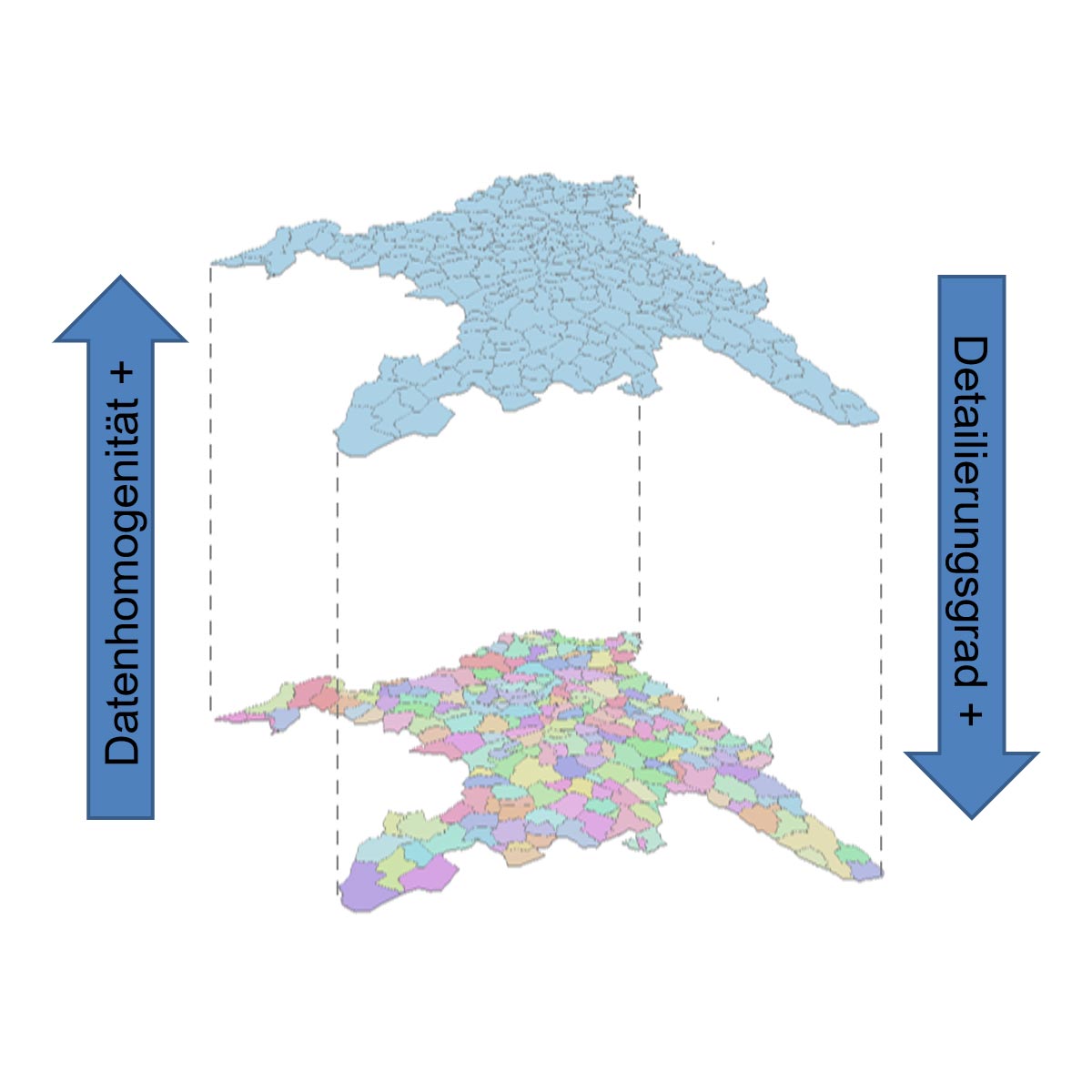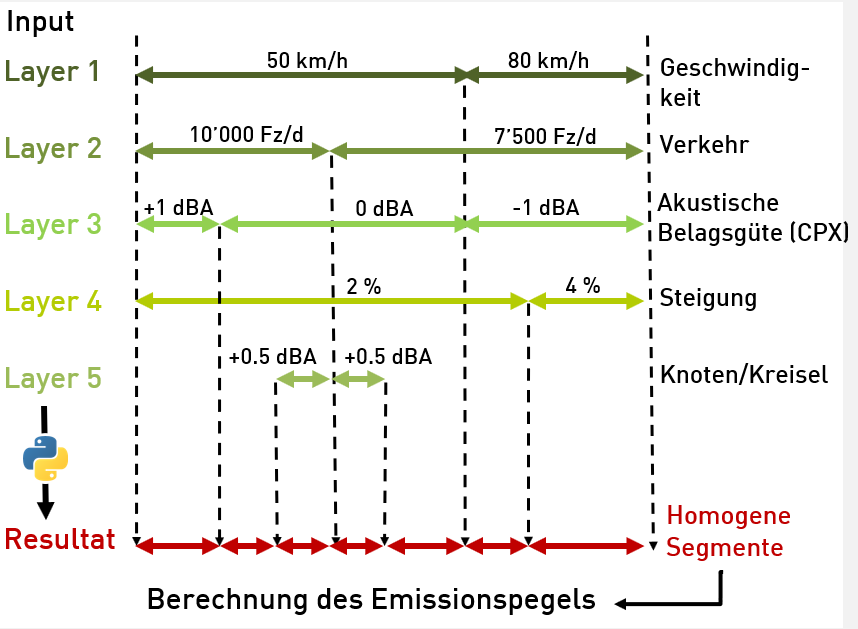Noise protection as a permanent task
The enforcement authority is obliged to protect the population from excessive noise. Owners of roads are also subject to the legal requirements for information and disclosure of the Noise Abatement Ordinance (LSV) as well as the Geoinformation Act (GeoIG) and the Geoinformation Ordinance (GeoIV).
Cantons and cities therefore require an area-wide road noise register. It serves to determine and monitor the current noise situation and allows for early and rapid action in case of need.
Our solution
G+P employees create a large-scale and building-specific 3D noise calculation model. The input data is composed of numerous basic data with different levels of detail and quality. The current available data are always used for the model construction. Any information from previous noise remediation projects - such as verified receiving points - is included in the overall noise model.
 Area-wide total noise model with uniform status for each data set
Area-wide total noise model with uniform status for each data set
Thanks to automated data processing procedures with specially developed tools, homogeneous data sets result. All input data for the noise calculation are stored in a geodatabase. This ensures the reproducibility of the noise calculation at any time.

Formation of homogeneous emission segments from different parameters
Achieving results with distributed computing power
Noise calculation for thousands of streets and hundreds of thousands of buildings is a computationally intensive task. We have the necessary IT infrastructure to process large volumes of data with the SLIP20 noise calculation software on many computers simultaneously. And with the implementation of the sonROAD18 emission model in SLIP20, we are also prepared for future noise calculation requirements.
Administration and query in DECIBASE
With DECIBASE, G+P offers a modern, user-friendly web application with which the calculated road noise register can be displayed, queried, edited and periodically updated. DECIBASE is designed as a web GIS and displays emission data and noise pollution of various conditions clearly arranged on a map and in forms or lists.
Your benefit
An overall noise model for road noise offers you comprehensive benefits:
-
Homogeneous road noise cadastre with current noise levels
-
Building-specific information retrieval and rapid plausibility check of noise assessments for new buildings and conversions thanks to the user-friendly DECIBASE web application
-
Ordering of noise pollution scenarios (e.g. future traffic development, low-noise pavements, speed reductions) as a decision-making basis for the development of a noise and quiet protection strategy
-
Simple periodic updating of the area-wide road noise register thanks to automated data processing procedures
-
The data format meets the requirements of GeoIG and GeoIV.
Reference projects
Total Noise Model Canton Aargau
Total noise model canton Uri
/www.gundp.ch/file/898/Gesamtla%CC%88rmmodell-3D-La%CC%88rmmodell-Bannerbild.jpg)
/www.gundp.ch/file/1261/RBS_Decibase_Rail.jpg)
/www.gundp.ch/file/1701/Fachanlass_3D-Daten.jpg)
/www.gundp.ch/file/1955/Titelbild_Blogpost_SLIP20_L%C3%A4rmberechnungssoftware_v1.png)